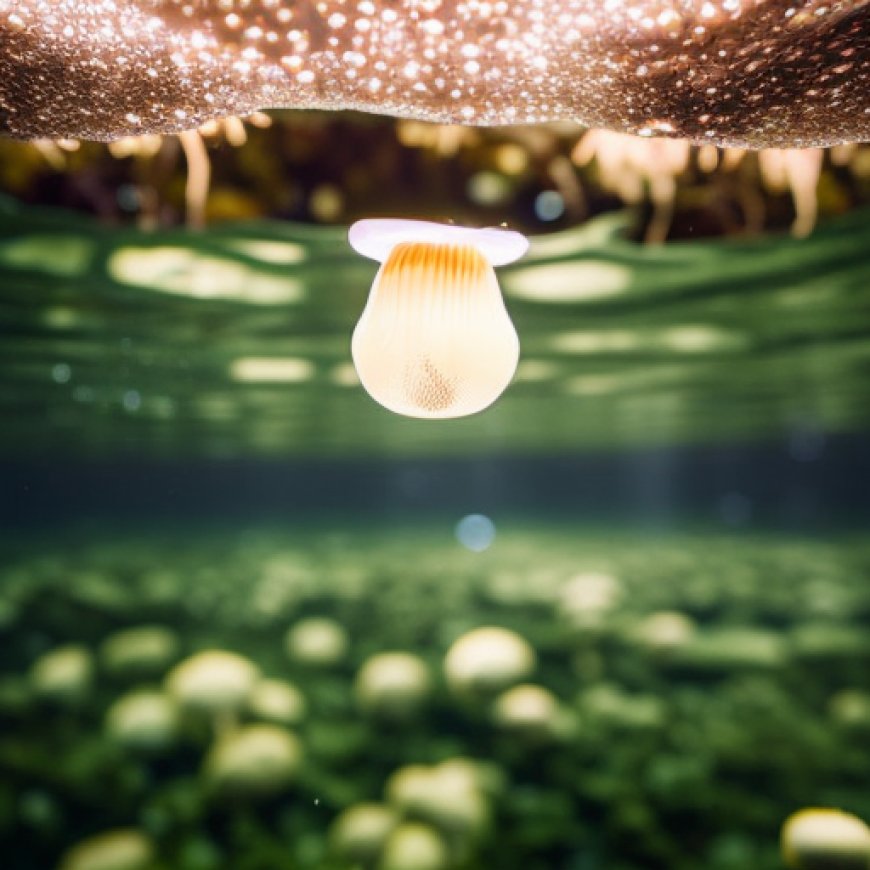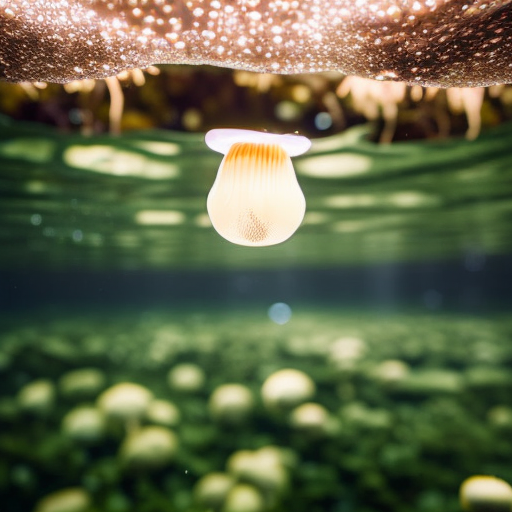Yes, Michigan does have freshwater jellyfish; here’s what to know from the DNR
Yes, Michigan does have freshwater jellyfish; here's what to know ... WXYZ 7 Action News Detroit


Michigan’s Freshwater Jellyfish: A Nonharmful Invertebrate

Introduction
During the summer in Michigan, visitors to lakes and other bodies of water may be surprised to encounter freshwater jellyfish. The Michigan Department of Natural Resources (DNR) has recently released information to raise awareness about these fascinating creatures.
The Sustainable Development Goals (SDGs)
The presence of freshwater jellyfish in Michigan aligns with several Sustainable Development Goals (SDGs), including:
- Goal 14: Life Below Water – Protecting and restoring aquatic ecosystems is crucial for the conservation of species like the freshwater jellyfish.
- Goal 15: Life on Land – Understanding the impact of non-native species on terrestrial ecosystems is essential for maintaining biodiversity.
About Freshwater Jellyfish
The DNR emphasizes that freshwater jellyfish pose no harm to humans and have a minimal impact on the aquatic environment. Although not native to Michigan or North America, these jellyfish have been present in the region for over a century. They are believed to originate from China and Asia.
Historical Presence
The first documented sighting of jellyfish in Michigan dates back to 1933 in the Huron River. Today, they can be found in most lakes and streams across the state, particularly during late summer and early fall.
Life Cycle
The life cycle of freshwater jellyfish involves the following stages:
- Jellyfish spend winter in bodies of water in a podocyst resting stage.
- As conditions become more favorable, podocysts develop into polyps and continue the life cycle through asexual reproduction.
- By late summer, polyps develop into the medusa stage, resembling free-swimming jellyfish.
Nonharmful Nature
Tim Cwalinski, the DNR’s northern Lake Huron manager, assures that freshwater jellyfish sightings are harmless. Despite possessing stinging cells like their marine counterparts, their small size prevents them from causing harm to humans. Furthermore, it is unlikely that freshwater jellyfish can negatively compete with fish species by consuming significant amounts of zooplankton in Michigan’s bodies of water.
Conclusion
If you are fortunate enough to observe a single medusa stage or colony of freshwater jellyfish in Michigan’s lakes or slow-moving streams this year, there is no cause for panic. These invertebrates have peacefully coexisted with our waterways for a century.
SDGs, Targets, and Indicators
| SDGs | Targets | Indicators |
|---|---|---|
| SDG 14: Life Below Water | Target 14.1: By 2025, prevent and significantly reduce marine pollution of all kinds, particularly from land-based activities, including marine debris and nutrient pollution | Indicator: Presence of freshwater jellyfish as an indicator of the aquatic environment’s health and pollution levels |
| SDG 15: Life on Land | Target 15.1: By 2020, ensure the conservation, restoration, and sustainable use of terrestrial and inland freshwater ecosystems and their services, in particular forests, wetlands, mountains, and drylands, in line with obligations under international agreements | Indicator: Distribution and population density of freshwater jellyfish as an indicator of the health and biodiversity of freshwater ecosystems |
1. Which SDGs are addressed or connected to the issues highlighted in the article?
SDG 14: Life Below Water
The presence of freshwater jellyfish in Michigan’s lakes and streams is connected to SDG 14, which focuses on the conservation and sustainable use of oceans, seas, and marine resources. While the article specifically mentions freshwater jellyfish, their presence indicates the health of the aquatic environment and can be used as an indicator of pollution levels.
SDG 15: Life on Land
The article also connects to SDG 15, which aims to protect, restore, and promote sustainable use of terrestrial ecosystems. Freshwater jellyfish are found in lakes and streams, which are part of terrestrial and inland freshwater ecosystems. Their presence or absence can serve as an indicator of the health and biodiversity of these ecosystems.
2. What specific targets under those SDGs can be identified based on the article’s content?
Target 14.1: By 2025, prevent and significantly reduce marine pollution of all kinds, particularly from land-based activities, including marine debris and nutrient pollution
The article does not directly address marine pollution, but the presence of freshwater jellyfish can indirectly indicate the pollution levels in Michigan’s lakes and streams. Monitoring the distribution and population density of freshwater jellyfish can help assess the effectiveness of efforts to reduce pollution and achieve this target.
Target 15.1: By 2020, ensure the conservation, restoration, and sustainable use of terrestrial and inland freshwater ecosystems and their services, in particular forests, wetlands, mountains, and drylands, in line with obligations under international agreements
The article highlights the presence of freshwater jellyfish in Michigan’s lakes and streams, indicating their existence within the terrestrial and inland freshwater ecosystems. Protecting and conserving these ecosystems is crucial to achieving this target. Monitoring the distribution and population density of freshwater jellyfish can provide insights into the health and sustainability of these ecosystems.
3. Are there any indicators mentioned or implied in the article that can be used to measure progress towards the identified targets?
The article mentions two indicators that can be used to measure progress towards the identified targets:
Indicator: Presence of freshwater jellyfish as an indicator of the aquatic environment’s health and pollution levels
The presence or absence of freshwater jellyfish can serve as an indicator of the health and pollution levels of Michigan’s lakes and streams. If the population of freshwater jellyfish decreases or disappears, it may indicate deteriorating water quality and pollution.
Indicator: Distribution and population density of freshwater jellyfish as an indicator of the health and biodiversity of freshwater ecosystems
Monitoring the distribution and population density of freshwater jellyfish can provide insights into the health and biodiversity of Michigan’s freshwater ecosystems. Changes in their distribution or population density can indicate the impact of human activities or environmental changes on these ecosystems.
4. SDGs, Targets, and Indicators
| SDGs | Targets | Indicators |
|---|---|---|
| SDG 14: Life Below Water | Target 14.1: By 2025, prevent and significantly reduce marine pollution of all kinds, particularly from land-based activities, including marine debris and nutrient pollution | Indicator: Presence of freshwater jellyfish as an indicator of the aquatic environment’s health and pollution levels |
| SDG 15: Life on Land | Target 15.1: By 2020, ensure the conservation, restoration, and sustainable use of terrestrial and inland freshwater ecosystems and their services, in particular forests, wetlands, mountains, and drylands, in line with obligations under international agreements | Indicator: Distribution and population density of freshwater jellyfish as an indicator of the health and biodiversity of freshwater ecosystems |
Behold! This splendid article springs forth from the wellspring of knowledge, shaped by a wondrous proprietary AI technology that delved into a vast ocean of data, illuminating the path towards the Sustainable Development Goals. Remember that all rights are reserved by SDG Investors LLC, empowering us to champion progress together.
Source: wxyz.com

Join us, as fellow seekers of change, on a transformative journey at https://sdgtalks.ai/welcome, where you can become a member and actively contribute to shaping a brighter future.







